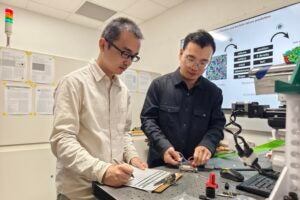Recovering a forgotten history of African American life was motivation enough for anthropology graduate student Nedra Lee and her peers to brave the Texas summer heat while excavating an old farmstead in southern Travis County.
Lee’s adviser, Maria Franklin, an associate professor of anthropology, headed up community outreach and oral history components of the project. Franklin is an expert in African diaspora archaeology, which focuses on the experience of people of African descent around the world. The discipline has its roots in the study of black slavery and has been a popular area of study for historical archaeologists.
Directed by Doug Boyd, vice president of Prewitt and Associates, Inc., an Austin cultural resource management firm, the Ransom Williams Farmstead Project represents a collaborative effort of the Texas Department of Transportation (TxDOT), local historians and archaeologists, and the Department of Anthropology and the John Warfield Center for African and African American Studies at The University of Texas at Austin.
The project is multi-faceted. It includes archival research and oral histories of the descendants of freed slaves as well as the archeological investigation of the site. While the excavation aims to reveal how Texas freedmen lived just after the Civil War, the oral history project is focused on how contemporary African Americans remember and relate their ancestors’ history, from emancipation to the 1960s.



